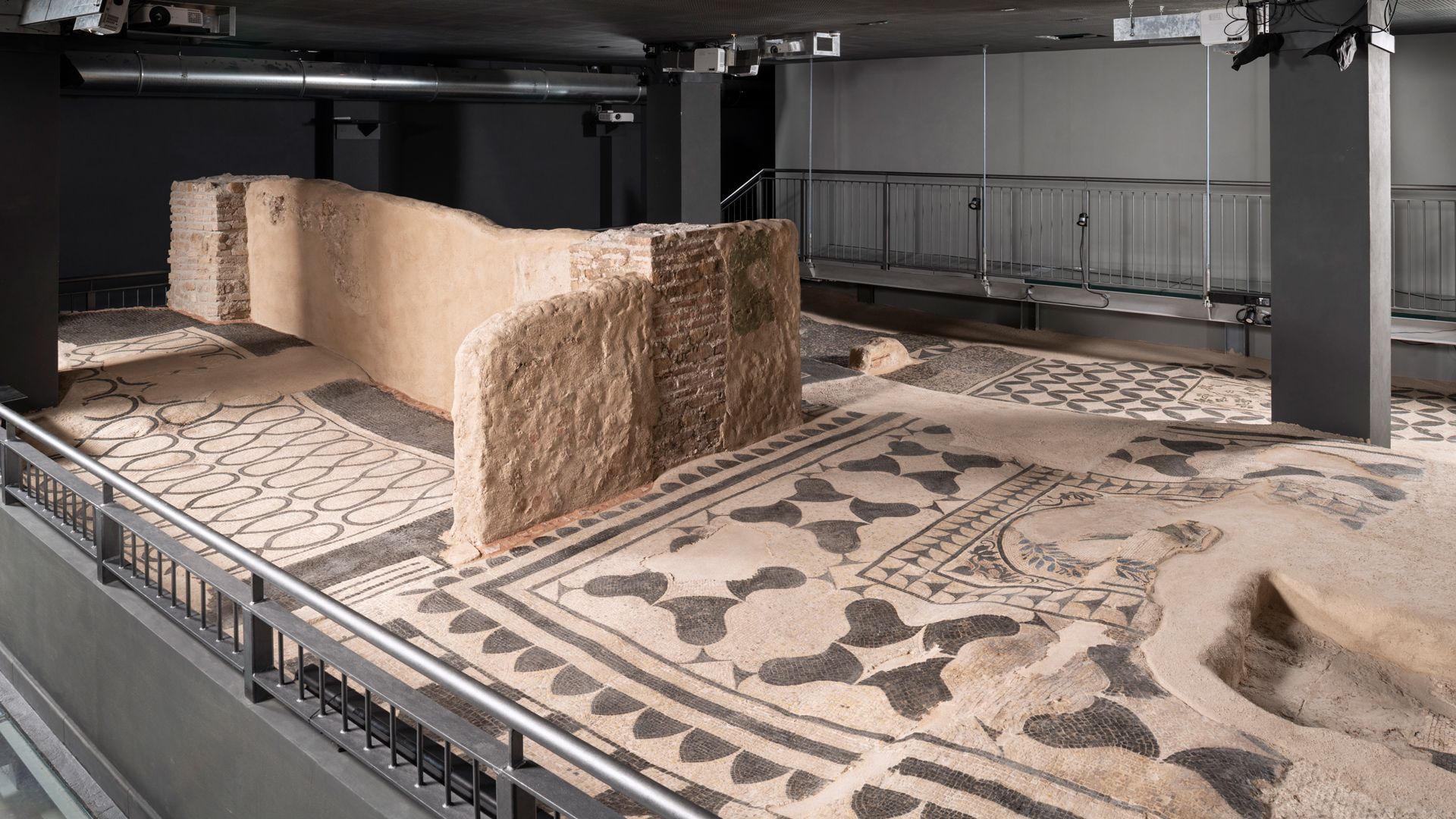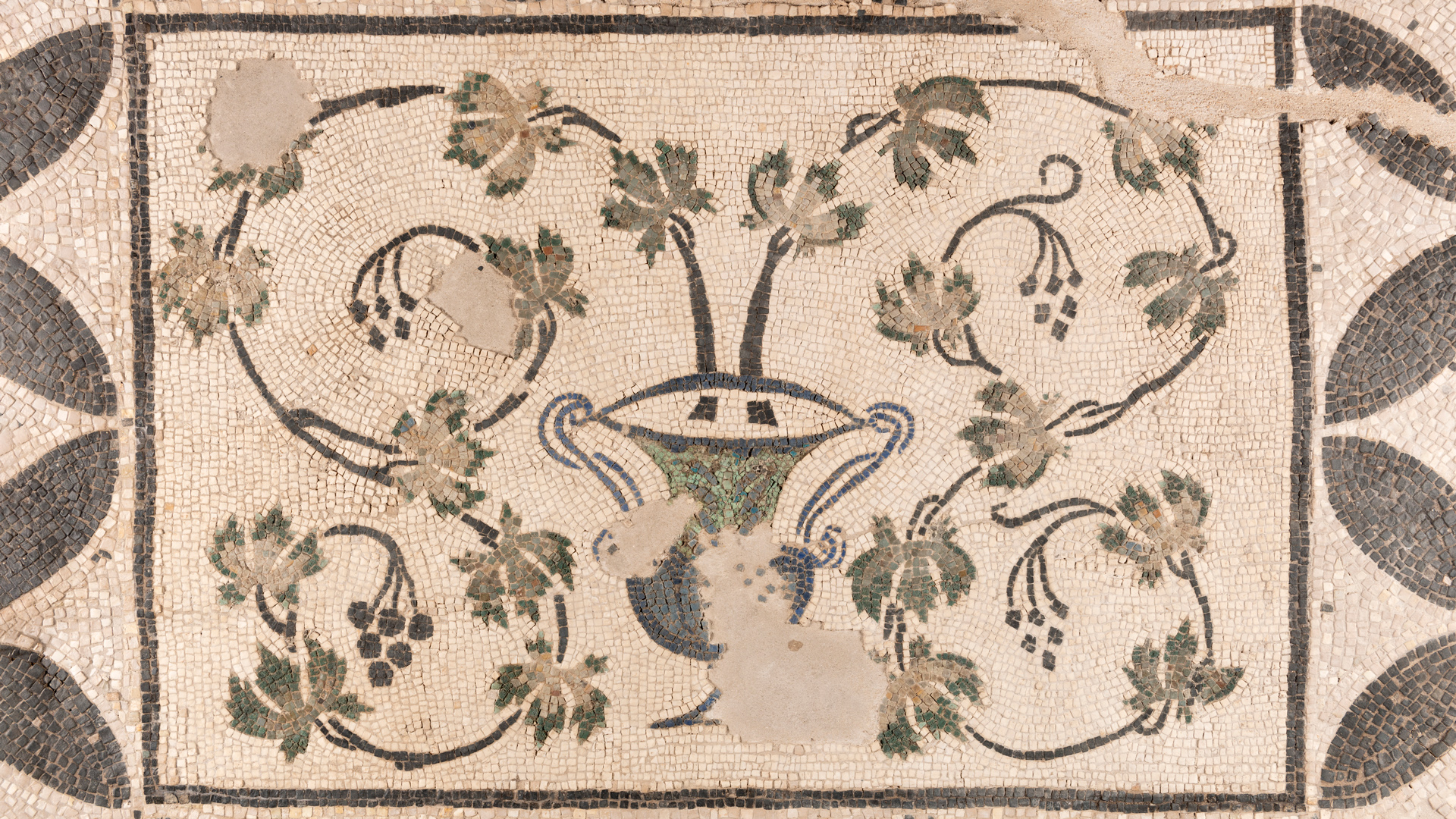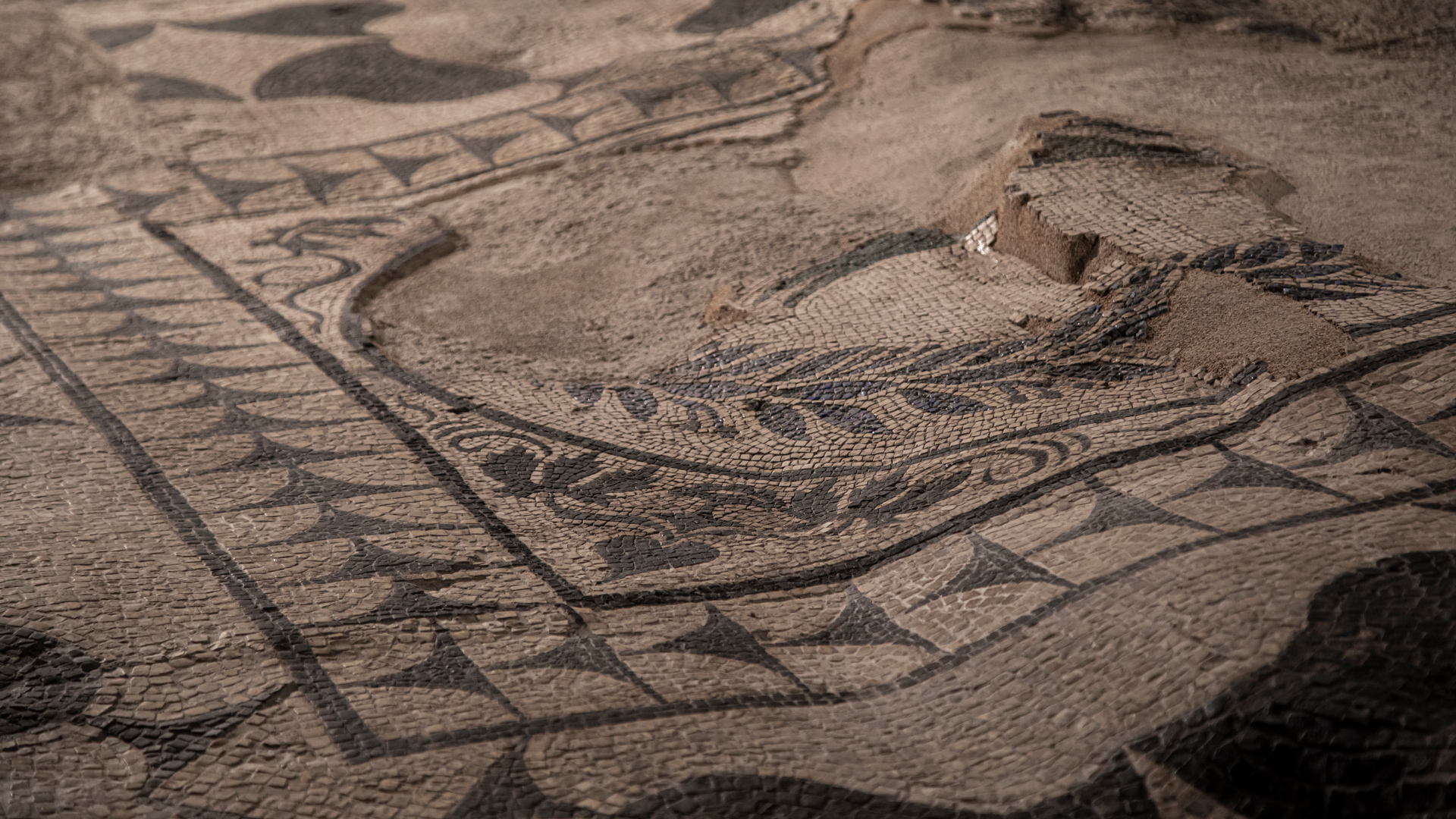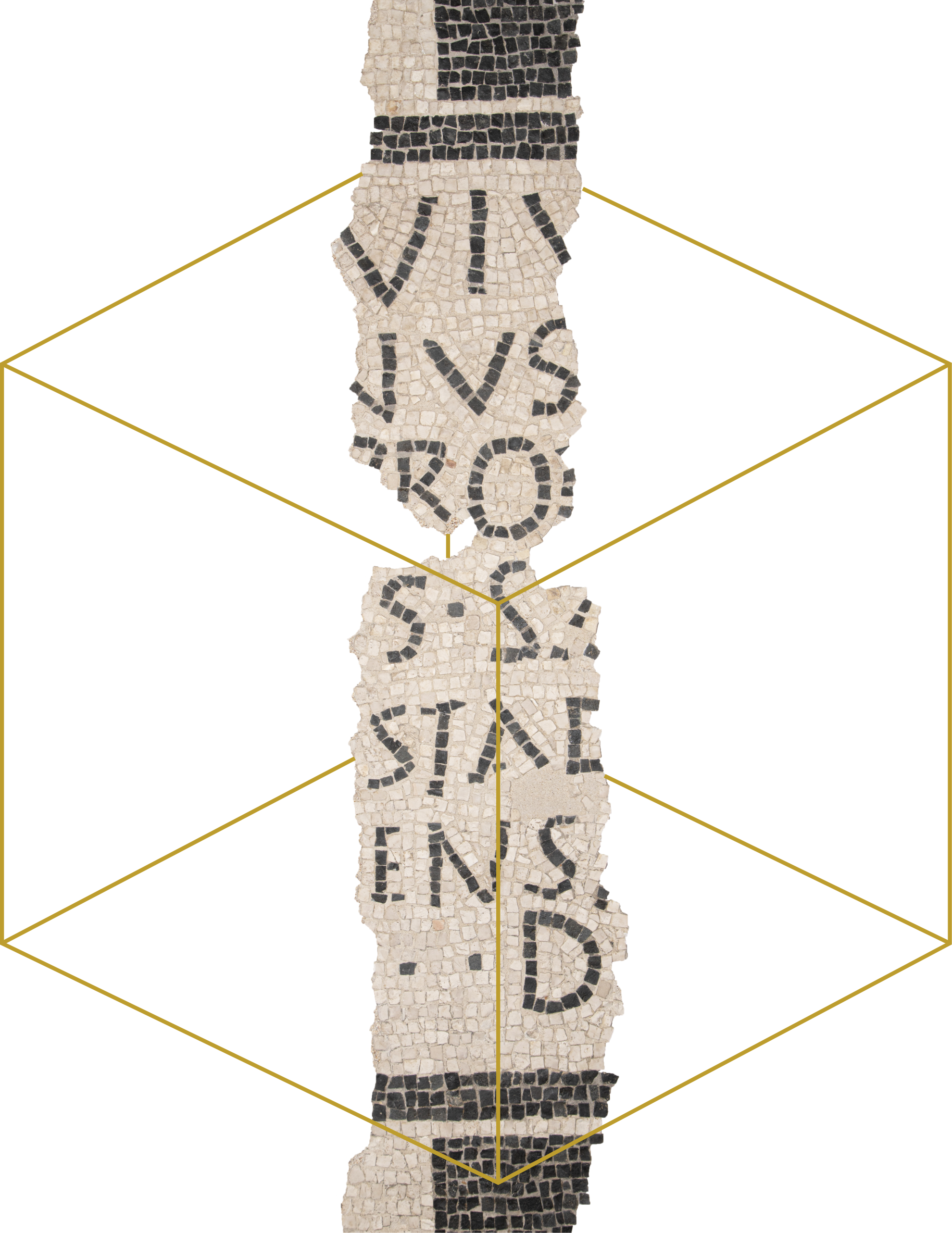
The earliest archaeological evidence of human activity in this area dates back to the time of Rome’s foundation in the 8th century BCE. Between the 6th and 3rd centuries BCE a tufa block wall – possibly belonging to a watchtower – was incorporated into the fortifications whose monumental remains are still visible today in both Piazza Albania and Via di Sant’Anselmo. Subsequent building activity at the end of the 3rd century BCE, raised the floor level yielding a soil fill rich with pottery sherds of that period. In the middle of the 2nd century BCE a domus (Latin for “house”) began to take shape within a massive opus incertum structure (small, irregular blocks inserted into thick mortar to create a crude masonry surface on a rubble or concrete wall), signaling a shift in the use of this area, from military to residential.
The domus’ living spaces have been identified, as well as those sections that served the purpose of storing food and accommodating hydraulic systems for the disposal of water. Continuous building renovations, instigated by successive generations of owners over the course of more than two centuries – from the 1st century BCE to the 2nd century CE – are documented by six superimposed floor levels reflecting the owners’ wealth, who were likely involved in the commercial activities of the Emporium (ancient Rome’s port located adjacent to the Aventine Hill) along the Tiber River. These transformations seem in part connected to the instability of the subsoil, through which quarries passed for the extraction of tufa rock and pozzolana for building purposes. Another extraordinary discovery entails a secondary wall with painted decoration and made with a clay core, the latter is a building technique rarely documented in Rome.
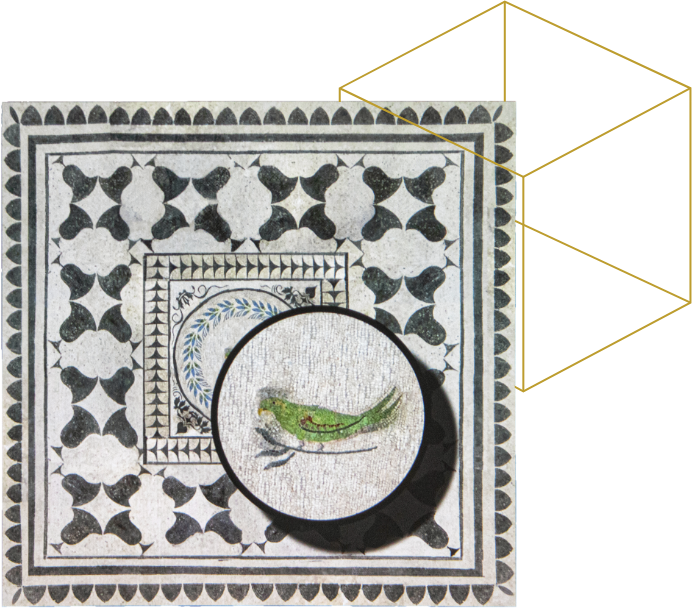
An inscribed mosaic fragment dating back to the Trajan era (98-117CE) reveals the once semi-public nature of a space that was specifically reserved for members of a collegium (literally a “society”, any association with a legal status). Later under the reign of Hadrian (117-138CE), black and white mosaic decoration with geometric patterns was added, whereas during the Antonine period (150-175CE), in four contiguous rooms mosaics in geometric or vegetal motifs were enriched by squares in polychrome tiles, depicting a parrot with multicolored feathers and a kantharos (a type of ancient Greek drinking cup) from which vine shoots laden with leaves and bunches of grapes emerge.
For the enhancement of this extraordinary complex, the Special Superintendency of Rome, with funding provided by BNP Paribas Real Estate, has created an “archaeological box”, an architectural environment in which the wall and floor structures have been relocated and repositioned alongside the other layers brought to light in the excavation process. The evocative multimedia reconstructions of Paco Lanciano and the voice of Piero Angela greet the visitors on this exciting journey into the past.
Plan your visit
The Archaeological Box is open, and you can visit it.
FROM SEPTEMBER 2023 THE ARCHAEOLOGICAL BOX WILL BE OPEN ON THE 1st – 2nd – 3rd – 4th SATURDAY OF THE MONTH
WITH VISITING SHIFTS AT 14.00 – 15.00 – 16.00 – 17.00 – 18.00, FOR TENANTS AT 19.00 AND 20.00
Each round involves the participation of a maximum of 20 visitors.
visit itinerary accessible to disabled people with minimal limitations
Entrance ticket:
full price €12.00
reduced € 8.00, for children aged 12 to 17, citizens of the European Union aged 18 to 25
free with € 2.00 booking fee, for children up to 12 years of age, disabled and accompanying person
ticket purchase exclusively online on the website www.scatolaarcheologica.it
the visit is in Italian.
for visits in English, French, German, Spanish, Russian, Chinese, Japanese it is necessary to purchase the entire visit shift and write in advance to scatolaarcheologica@archeologia.it
IT IS POSSIBLE TO REQUEST A VISIT ON DIFFERENT DAYS AND TIMES WITH EXTRAORDINARY OPENING. For info and reservations scatolaarcheologica@archeologia.it
For the external public, the appointment with the guide is in piazza Albania 35; for tenants at the reception,
Thanks for your cooperation.

